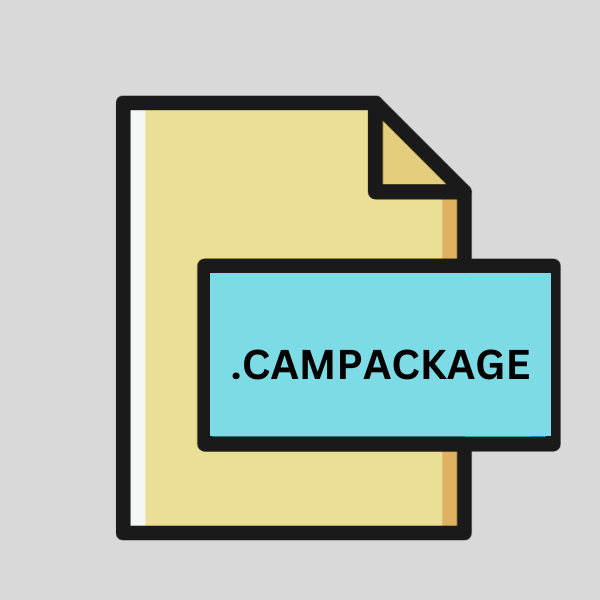.CAMPACKAGE File Extension

Camtasia Package
| Developer | TechSmith |
| Popularity | |
| Category | Data Files |
| Format | .CAMPACKAGE |
| Cross Platform | Update Soon |
What is an CAMPACKAGE file?
The .CAMPACKAGE file extension is primarily associated with compressed archives that contain various data files and resources bundled together.
These files serve as packages, encapsulating multiple elements into a single unit for easier storage, transfer, and organization.
The contents of a .CAMPACKAGE file can vary widely, ranging from multimedia assets such as images, videos, and audio clips to documents, application files, and other forms of data.
More Information.
The history of the .CAMPACKAGE file extension is intertwined with the evolution of digital packaging formats and compression techniques.
Developers relied on traditional archive formats like ZIP and RAR to package their files. These formats had limitations in terms of compression efficiency and flexibility.
As a result, specialized packaging formats such as .CAMPACKAGE emerged to provide tailored solutions for specific use cases, particularly in the fields of software distribution, game development, and multimedia production.
The primary purpose of .CAMPACKAGE files is to simplify the distribution and deployment of complex digital projects.
By consolidating multiple files and resources into a single package, developers can streamline the installation process, reduce file size, and ensure the integrity and security of their content.
.CAMPACKAGE files often include metadata and configuration settings, allowing for customizable installation options and seamless integration with target platforms.
Origin Of This File.
The origin of the .CAMPACKAGE file extension can be traced back to the need for efficient data packaging and distribution in software development and digital content management.
As technology advanced and the volume of digital content grew, developers sought streamlined methods to package and deliver their applications, games, and multimedia projects.
The .CAMPACKAGE format emerged as a solution to address these needs, offering a compact and versatile way to bundle diverse resources into a single, manageable entity.
File Structure Technical Specification.
The structure of a .CAMPACKAGE file is typically defined by its underlying compression algorithm and packaging framework.
While specific implementations may vary, most .CAMPACKAGE files adhere to common conventions regarding file organization and metadata storage. At a high level, a .CAMPACKAGE file consists of the following components:
- Header: Contains metadata and configuration information.
- Data Segments: Compressed or encrypted data files comprising the contents of the package.
- Footer: Concludes the file and may include additional metadata or checksums for data integrity verification.
How to Convert the File?
Converting .CAMPACKAGE files is a seamless process. Utilize extraction software such as 7-Zip for Windows or File Roller for Linux. These tools allow you to effortlessly unpack the contents of .CAMPACKAGE files, revealing their internal components.
Simply select the desired .CAMPACKAGE file, right-click and choose the extraction option. The software will handle the rest, extracting the bundled files to a location of your choice on your computer.
Once extracted, you can access and utilize the individual files contained within the .CAMPACKAGE package according to your needs. Whether it’s software applications, multimedia projects, or other digital resources, converting .CAMPACKAGE files empowers you to explore and leverage their contents efficiently.
With just a few clicks, you can unlock the potential of .CAMPACKAGE files and harness their resources for various purposes.
Advantages And Disadvantages.
Advantages:
- Compact Storage: .CAMPACKAGE files effectively compress multiple resources into a single package, reducing storage requirements and facilitating efficient distribution.
- Simplified Deployment: By bundling all necessary files and dependencies, .CAMPACKAGE files streamline the installation and deployment process for software applications, games, and multimedia projects.
- Customization Options: Developers can include metadata and configuration settings within .CAMPACKAGE files, enabling customizable installation options and platform-specific optimizations.
- Data Integrity: Through checksums and encryption, .CAMPACKAGE files ensure the integrity and security of bundled content, mitigating the risk of data corruption or tampering.
Disadvantage:
- Compatibility Issues: .CAMPACKAGE files may not be universally supported across all platforms and software environments, leading to compatibility issues and potential limitations in interoperability.
- Overhead: While compression can reduce file size, the process of packaging and unpacking .CAMPACKAGE files may introduce computational overhead, particularly on resource-constrained systems.
- Complexity: Managing .CAMPACKAGE files requires familiarity with packaging tools and compression techniques, which may pose challenges for novice users or inexperienced developers.
- Versioning and Updates: Updating or modifying the contents of a .CAMPACKAGE file may necessitate careful versioning and deployment strategies to ensure compatibility and consistency across different installations.
How to Open CAMPACKAGE?
Open In Windows
- Use third-party compression software like 7-Zip or WinRAR to extract the contents of the .CAMPACKAGE file.
- Alternatively, if the .CAMPACKAGE file is associated with a specific application or game, use the corresponding installer or extraction tool provided by the developer.
Open In Linux
- Utilize command-line tools such as tar or unzip to extract the contents of the .CAMPACKAGE file.
- Alternatively, install and use graphical archive managers like File Roller or Ark to open .CAMPACKAGE files with a user-friendly interface.
Open In MAC
- Similar to Linux, you can use command-line tools like tar or unzip to extract .CAMPACKAGE files.
- Alternatively, utilize third-party archive management software such as The Unarchiver or Keka for a more intuitive extraction experience.
Open In Android
- Install a file manager app from the Google Play Store that supports archive extraction, such as Solid Explorer or MiXplorer.
- Navigate to the location of the .CAMPACKAGE file in the file manager and use the built-in extraction functionality to unpack its contents.
Open In IOS
- Due to iOS’s restricted file system access, opening .CAMPACKAGE files directly on iOS devices may be challenging.
- Transfer the .CAMPACKAGE file to a computer or cloud storage service that supports file extraction, then use compatible software to unpack its contents.
Open in Others
For other platforms or specific applications, consult the documentation or support resources provided by the respective developers for guidance on opening .CAMPACKAGE files.













